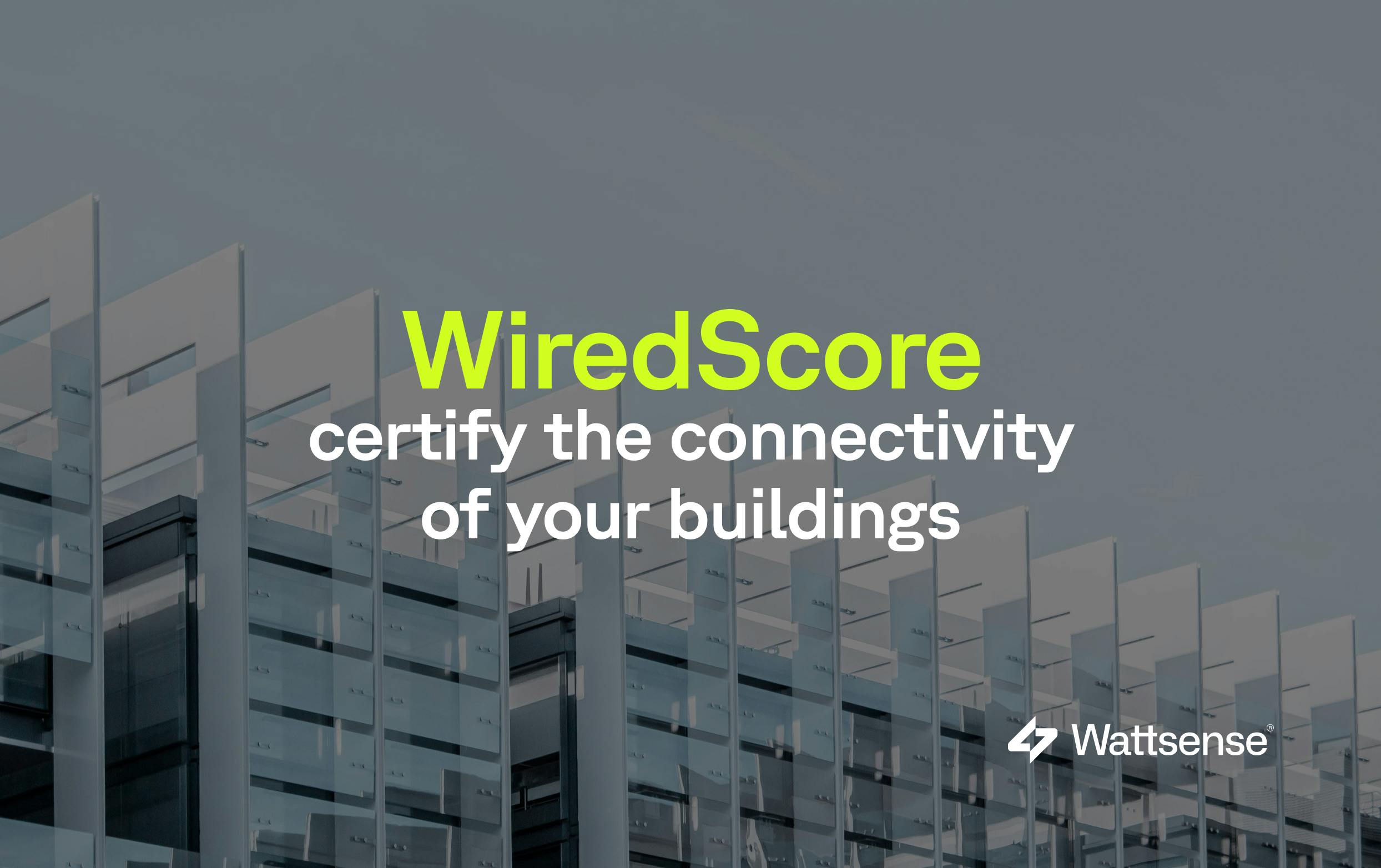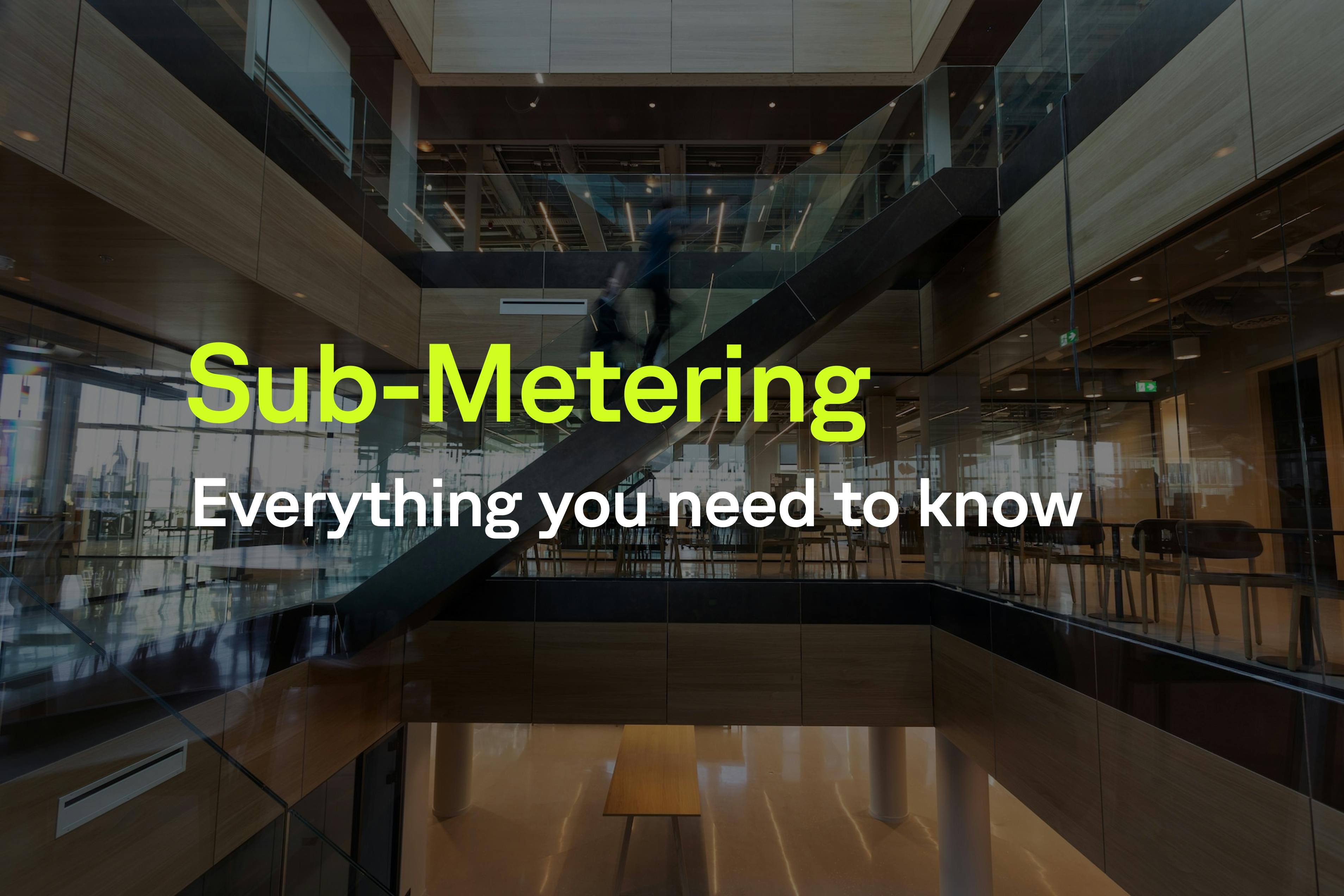Buildings are getting smarter with their own label: the SmartScore
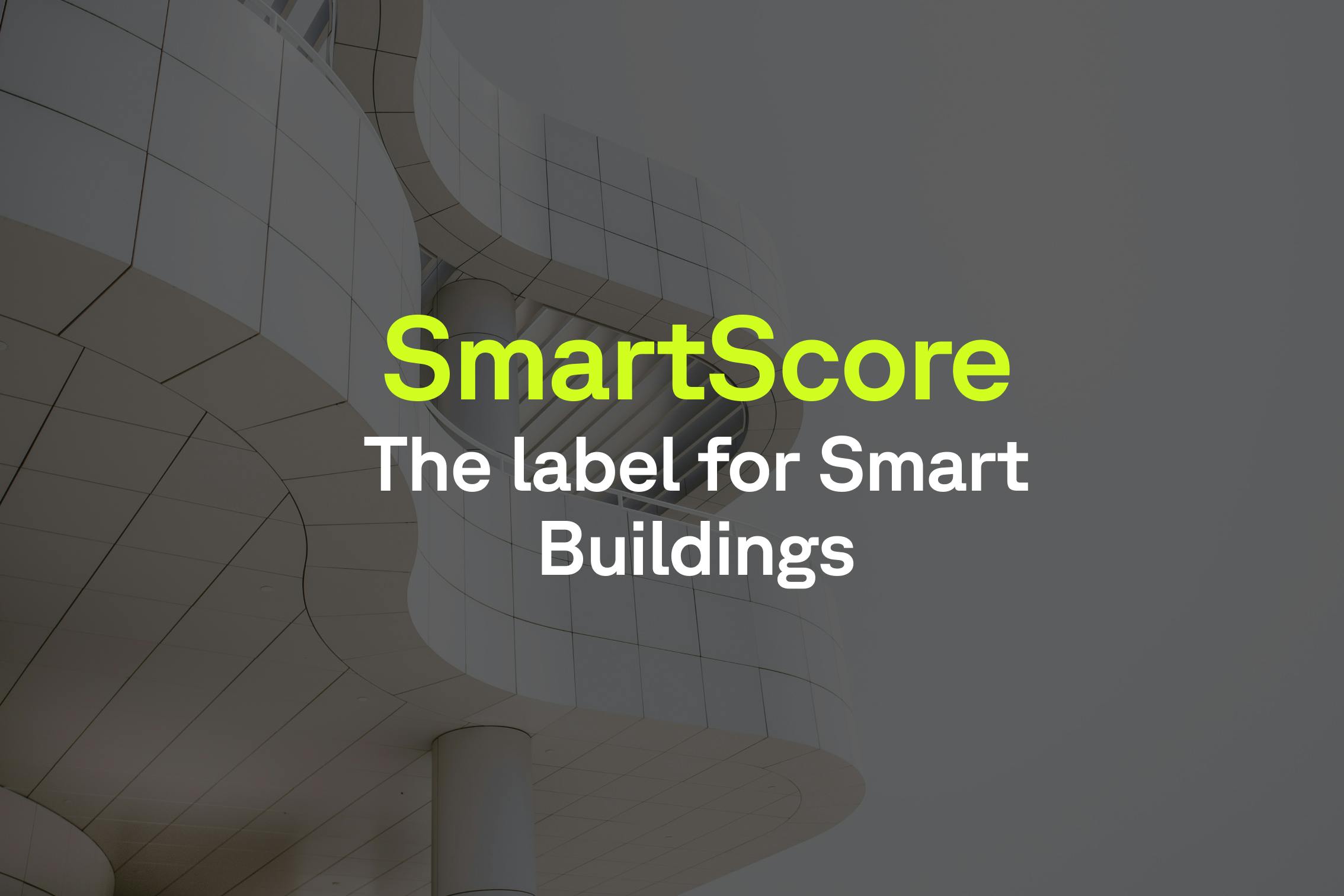
Technological advancements have revolutionized how we live and work, and this is clearly reflected in the architecture and management of modern buildings. Smart buildings, which integrate cutting-edge technologies to enhance user experience and energy efficiency, are increasingly popular. To recognize and standardize these advancements, a new label has been recently created: the SmartScore.
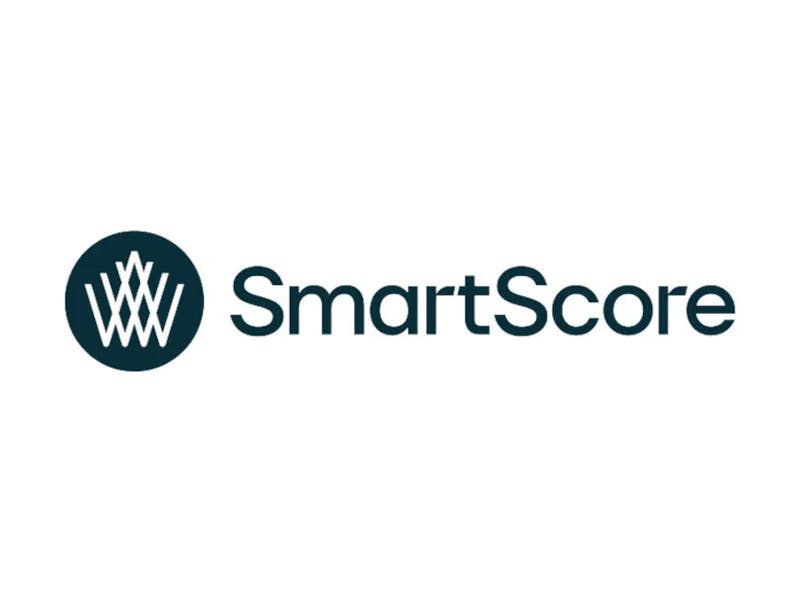
The SmartScore, the anticipated complement to real estate labels
The real estate industry has long been in search of a labelling system that could encapsulate the advancements of smart buildings. The SmartScore label fills this gap, providing official recognition to buildings that intelligently integrate technology to enhance the daily lives of their occupants. This label is a valuable tool for developers and investors looking to showcase their properties as at the forefront of technological innovation.
Strong Demand for Smart Buildings
According to a WiredScore report, there is a growing demand for smart, sociable, and sustainable workspaces. Users are seeking unique experiences and value cutting-edge technologies. Approximately 26% of professional space users expect offices equipped with the latest technology, while 30% desire digital services that foster corporate culture. Moreover, 63% of users consider it important to work in an office that embraces sustainability and connectivity.
The SmartScore label was launched in 2021. It is the result of collaboration between tenants, owners, and experts within the WiredScore Smart Building Council. This consortium brings together over 90 international companies, leaders in innovation. It is a true pioneer in the field of smart building labelling. Founded in 2013 in New York, it quickly gained prominence, thanks to its innovative approach and support from leaders in real estate, technology, and telecommunications, as well as the then-mayor, Michael Bloomberg.
To Read: WiredScore: A Label Certifying Optimal Connectivity for Your Buildings
The SmartScore aims to offer a clear definition of smart buildings and to be more demanding than existing labels in the field of connectivity. Therefore, the SmartScore label is intended to become a benchmark in the building industry, ensuring that labelled buildings provide an optimal user experience and efficient resource management
Strong Demand for Smart Buildings
According to a WiredScore report, there is a growing demand for intelligent, sociable, and sustainable workspaces. Users are seeking unique experiences and value cutting-edge technologies. Approximately 26% of professional space users expect offices equipped with the latest technology, while 30% desire digital services that foster corporate culture. Moreover, 63% of users consider it important to work in an office that embraces sustainability and connectivity.
Addressing the Lack of an Adapted Label for Smart Buildings
The rise of smart buildings has created a need for a label capable of certifying the strengths of smart technologies and their management. A smart building is defined not only by the sum of its technologies but rather by how these technologies are used to enhance user experience. The SmartScore label, therefore, applies to buildings that effectively and relevantly utilize technology, whether through Building Management Systems (BMS) or through applications and digital services that optimize daily building management.
What is SmartScore? The Approach in Detail
Like all standards and certifications, SmartScore relies on a comprehensive approach based on the evaluation of numerous criteria.
Precise Objectives of SmartScore
The objective of SmartScore is clear: to enhance the digital infrastructure of recent buildings while improving the user experience through technology. It relies on two fundamental pillars: the functionalities offered for user experience and strong technological foundations (infrastructure, services, and procedures). The label emphasizes the adaptability of technologies to anticipate future uses and promote efficient management of intelligent infrastructures.
SmartScore Criteria
SmartScore is determined based on the evaluation of 59 criteria across 12 themes.
Building functionalities account for 65% of the final score
These criteria assess six aspects related to functionalities:
• Individual and collective productivity (registration systems, geolocation),
• Health and well-being (air quality management, comfort),
• Community and available services (access to building services, local information),
• Sustainable development (energy and water usage, alternative energies, and self-learning systems),
• Maintenance (space utilization, reporting, malfunction alerts),
• Security (access, population management...).
Digital functionalities are also analyzed across six themes:
• Connectivity (redundancy of high-speed access, Wi-Fi),
• Intelligent systems (building technical management, integration platforms),
• Building integration network (network environment, passive and active infrastructure),
• Governance (smart building strategy, monitoring of smart building efficiency),
• Cybersecurity (cybersecurity policy, digital protection checks),
• Data sharing (management of personal data).
The SmartScore label offers four levels of certification: Certified, Silver, Gold, and Platinum, allowing for a gradation of performance and technology integration within buildings.

The Process of Obtaining the SmartScore Label
The process to obtain the SmartScore label is rigorous and structured, ensuring reliability and relevance. Like most standards, it follows a multi-stage path, each stage being obligatory.
• Registration: The first step for a project is to enrol in the SmartScore program.
• Implementation of the approach: Before reviewing the criteria, it is necessary to select the most relevant ones among the 59 proposed criteria. Indeed, the label must be adapted to the specificities of the building, and it is rare for all criteria to be useful for this purpose.
• Intermediate documentary review: During construction, an initial documentary review is conducted by the WiredScore certifier. It is also essential for renovations and developments in a building already in operation.
• A final documentary review is conducted at the end of the project for all projects.
• Validation: Obtaining the certificate confirms the building's compliance with SmartScore label standards.
• Renewal: Every two years, it is necessary to renew the label for buildings in operation.
Unlike the WiredScore label, the SmartScore label does not require a physical visit to the building for the issuance of the final certificate. That is why documentary verifications are crucial steps, carried out very rigorously.
What does the SmartScore label bring to a building?
The SmartScore label symbolizes a significant advancement in building technology and sustainability. Still very recent, it is quickly gaining popularity in many countries, as it brings numerous benefits for both real estate developers and end users of the buildings.
The utility and efficiency value of a SmartScore-certified building is very strong. Buildings with the SmartScore label promise a significant reduction in environmental impact, resulting in substantial savings in their management budget.
SmartScore-labeled buildings are in line with the most demanding current environmental standards:
- The DEET, or "tertiary decree," aims to progressively reduce the energy consumption of tertiary buildings.
- The BACS decree requires the installation of automation and control systems, such as Building Technical Management (BMS), in certain buildings by 2025.
- Smart buildings perfectly meet these requirements.
Obtaining a WiredScore or SmartScore certificate represents a significant added value for any building. For real estate developers, these certificates are particularly attractive, especially for leasing office buildings or residences. For the tenant or end user, a certified building offers a guarantee of quality and efficiency, ensuring advanced functionalities and the possibility of future extensions or adaptations.
An often overlooked but essential aspect of smart buildings is data privacy and security. The SmartScore label takes into account the security of audio systems and other technologies integrated into the building, thus ensuring not only energy efficiency and comfort but also the protection of users' personal information.
The Wattsense solution facilitates obtaining the SmartScore label
In the world of intelligent real estate, obtaining the SmartScore label means demonstrating a commitment to innovation, sustainability, and improving the user experience. The solution offered by Wattsense can play a major role in facilitating the achievement of some of these objectives, thanks to its advanced technology and integrated solutions.
What is Wattsense?
Wattsense is a technological solution that enables simplified integration and management of connected technical equipment. This intelligent solution facilitates centralized data collection, real-time control, and proactive building maintenance: centralized and real-time access to data collected from equipment and sensors under different protocols, data analysis, alarm setup, etc. Wattsense directly contributes to several criteria necessary for obtaining the SmartScore label.
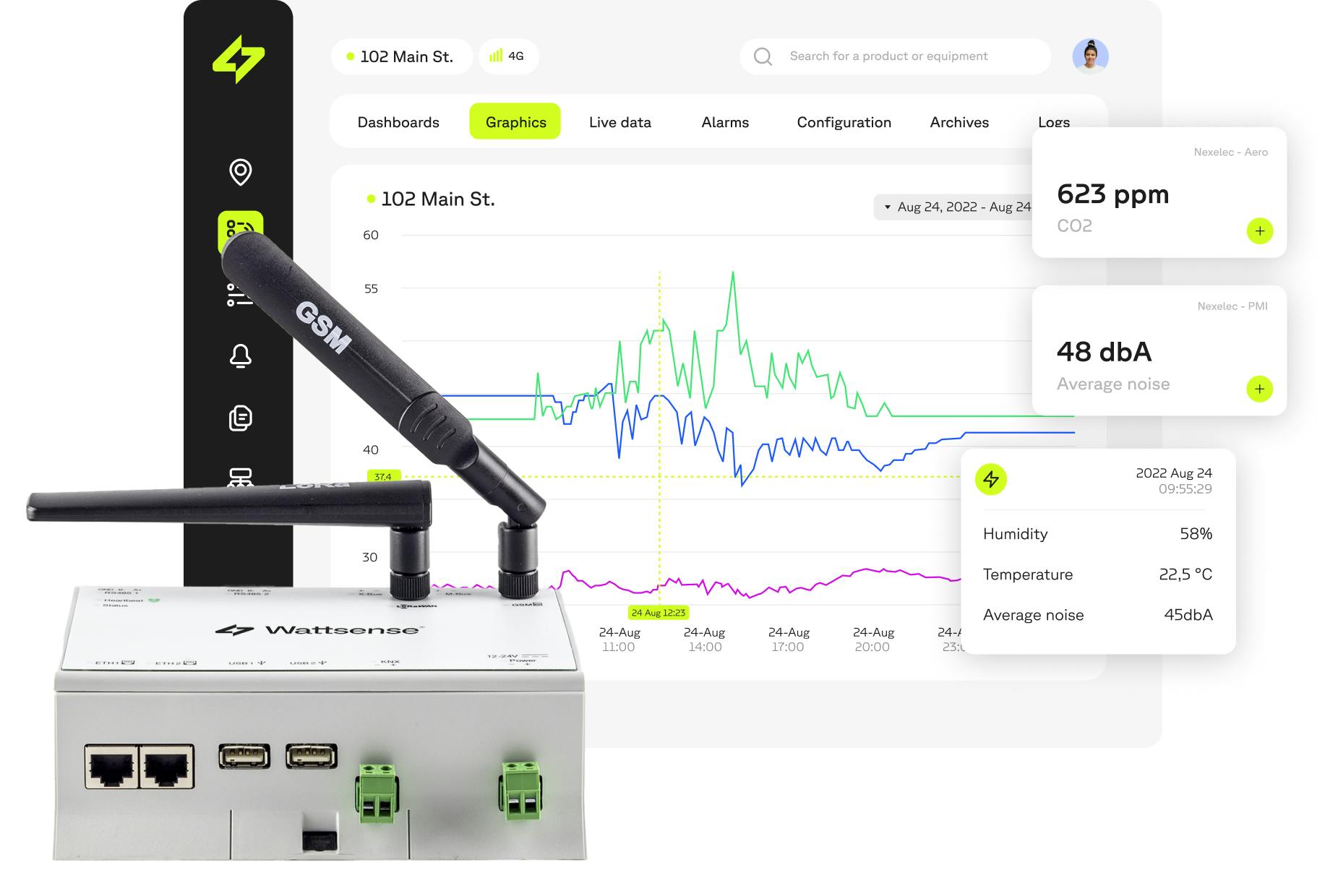
Wattsense Helps Meet SmartScore Criteria
The Wattsense solution is ideal for enhancing functionalities, particularly in the following areas:
In terms of health and well-being:
Wattsense enables the centralization of data from air quality sensors (CO2, VOC), making control smooth, fast, and efficient with the setup of alarms and reporting as part of the label requirements.
By centralizing data from temperature and sound volume sensors and making their centralized control particularly easy, Wattsense helps improve user comfort.
Regarding maintenance, Wattsense ensures efficient connection with the building's technical equipment, allowing optimal control of their operation and the setup of alerts in case of malfunctions.
The Wattsense solution also checks the "sustainable development" box. Thanks to connections via energy meters, it enables efficient retrieval of energy consumption data (electricity, water) and the implementation of monitoring for these metrics.
Want to learn more about the Wattsense connectivity solution?
Discover our solutionContinue reading

IoT for Smart Energy Sub-Metering Plan: A Guide for Better Consumption Control
